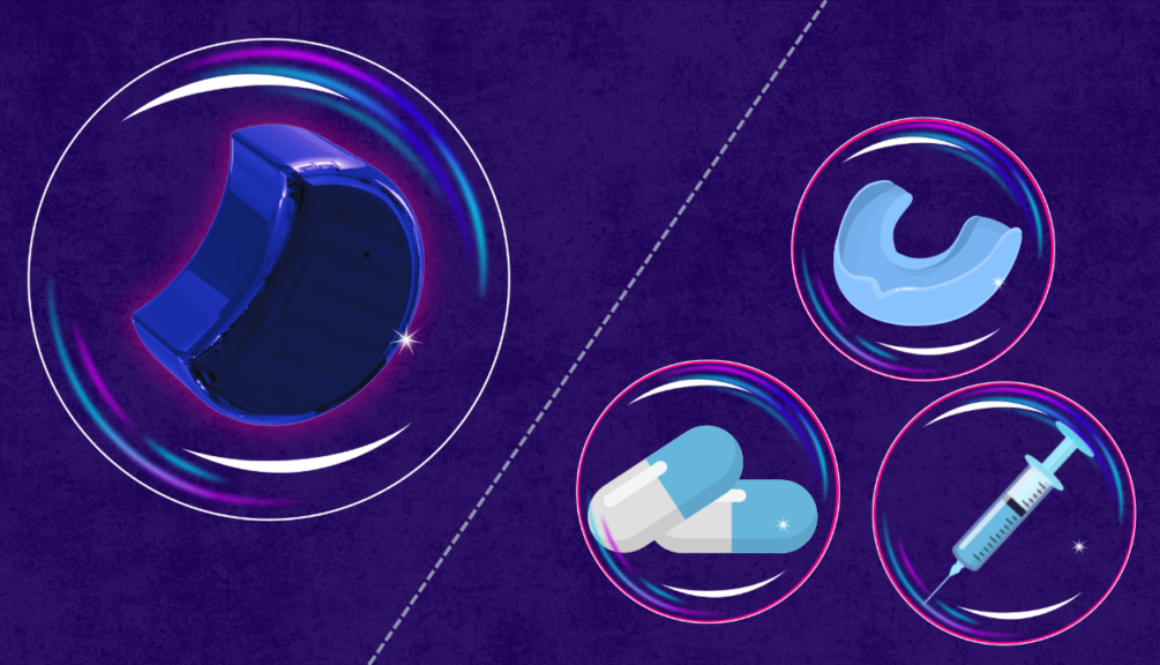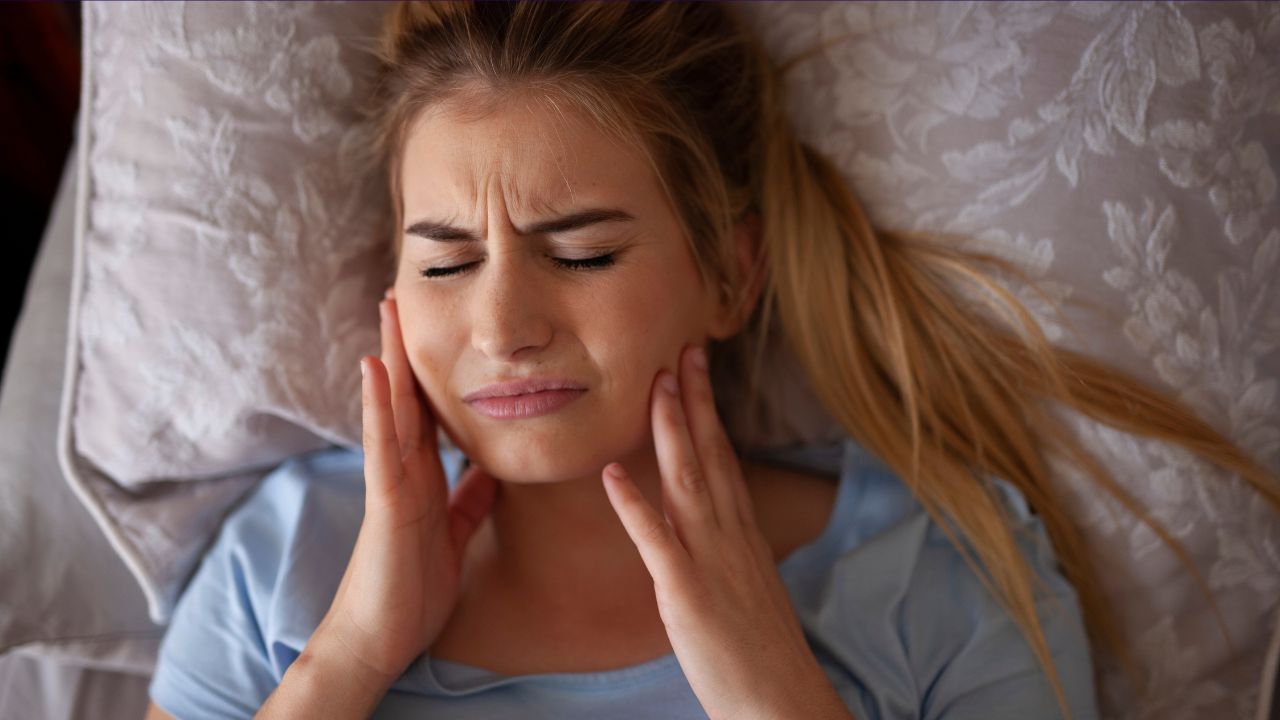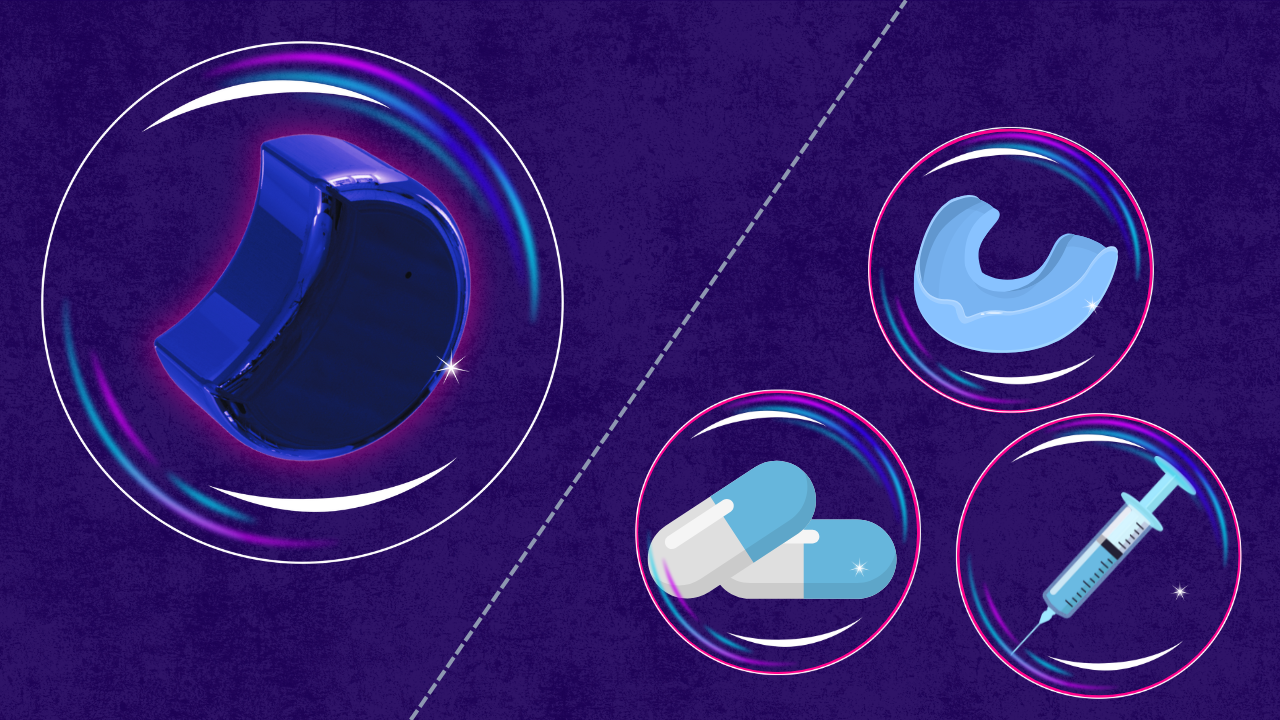How Zerene’s Biofeedback Device for Bruxism Stacks Up Against Nightguards, Botox, and More
 Dr Kjeld Aamodt DDS MS
Dr Kjeld Aamodt DDS MS
March 2025
Bruxism or chronic teeth grinding and clenching (often at night), is a common problem that can lead to worn-down teeth, jaw pain, headaches, and disrupted sleep. Both patients and professionals search for effective bruxism treatments – from custom nightguards to Botox injections – and many ask how to stop grinding teeth at night for good. In this post, we’ll compare traditional bruxism treatment options (like nightguards, therapeutic Botox, muscle relaxants, and physical therapy) with Zerene’s innovative biofeedback device. You’ll learn the pros and cons of each approach and how biofeedback for bruxism can serve as a standalone solution or a complementary therapy. The goal is a data-informed, clinical perspective on where Zerene fits into the overall therapeutic landscape for teeth grinding.
 Bruxism or chronic teeth grinding and clenching (often at night), is a common problem that can lead to worn-down teeth, jaw pain, headaches, and disrupted sleep.
Bruxism or chronic teeth grinding and clenching (often at night), is a common problem that can lead to worn-down teeth, jaw pain, headaches, and disrupted sleep.
Custom Nightguards (Occlusal Splints): Protection Without Behavior Change
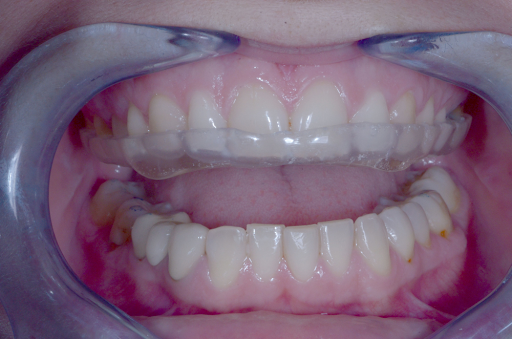
Custom-fitted nightguards (also called occlusal splints or bite guards) are often the first-line treatment dentists recommend for bruxism. These are plastic appliances worn over the teeth during sleep to create a protective barrier. A well-made nightguard prevents tooth damage by cushioning the forces of grinding and keeping upper and lower teeth separated (LINK). Dentists have long observed that nightguards can save teeth from excessive wear, cracks, and dental work replacements.
However, it’s important to understand that nightguards do not stop the bruxism habit itself. They’re a protective management tool, not a cure for the grinding/clenching behavior. A Cochrane systematic review – considered one of the highest forms of evidence – found insufficient evidence that wearing an occlusal splint actually reduces the frequency or intensity of sleep bruxism (LINK). In other words, you might still grind just as much – you’ll just be grinding on the guard. Many bruxism sufferers end up chewing through their guards over time or need periodic replacements due to wear. This wearing down process may release millions of pieces of microplastics directly into one’s body.
There are other drawbacks to nightguards: some patients find them uncomfortable or find that they disrupt sleep (due to excess salivation or bulkiness). Compliance can be an issue – it only helps if you actually wear it nightly. Additionally, a nightguard is a lifelong management approach; my dentist told me I’d need to wear one “every night for the rest of my life” (LINK). This prospect (and the ongoing expense of replacements) leads many patients to seek alternatives to nightguards.

Zerene vs. Nightguard:
Zerene’s device actually includes a custom-fitted mouthpiece similar to a nightguard, so it provides the same tooth protection benefits. The big difference is that Zerene doesn’t stop at passive protection – it actively works to break the grinding habit. With Zerene in training mode, if you start to clench, it delivers a gentle vibrational biofeedback cue to make you subconsciously relax your jaw without waking you (LINK). Over a short time, this conditions you to stop grinding even without the device. In fact, the majority of Zerene users train themselves out of bruxism after about two weeks of nightly use (more on that below). This means Zerene can potentially eliminate the need for continuous nightly guards – a huge win for patients. For healthcare practitioners, this approach addresses the root cause (muscle hyperactivity) rather than just preventing damage. That said, in very severe cases, a patient might initially use both or alternate between – a nightguard (or Zerene’s mouthpiece) to prevent catastrophic tooth wear while Zerene’s biofeedback works on curbing the behavior itself.
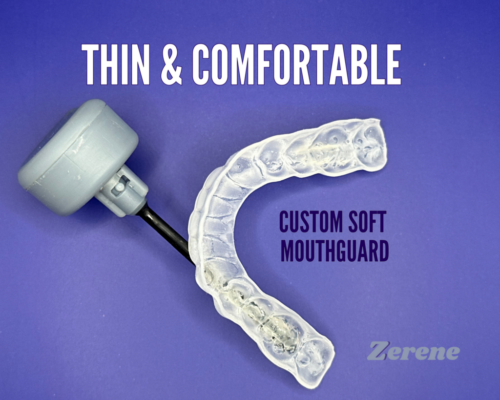
Therapeutic Botox (Masseter Injections): Relaxing the Jaw Muscles
Botulinum toxin (Botox) injections in the jaw (usually targeting the masseter and sometimes temporalis muscles) have emerged as a treatment for bruxism, especially in cases with significant muscle pain or hypertrophy. How does Botox help bruxism? By temporarily partially paralyzing or weakening the chewing muscles, Botox reduces the force of clenching and can break the cycle of muscle spasm and pain. Multiple studies show that Botox (BTX-A) injections can reduce the frequency of bruxism episodes and decrease associated pain levels while also lowering the bite force generated during clenching (LINK). In fact, a systematic review concluded that Botox offered superior efficacy in treating bruxism compared to placebo or even some traditional treatments (LINK). Clinically, many patients experience relief from jaw fatigue, headaches, and even a slimming of overbuilt masseter muscles after Botox treatment (LINK).
Botox is generally considered safe and effective for bruxism, particularly in severe cases (LINK). One big advantage is that it works relatively quickly – patients often notice improvement in jaw tension within days, and the effect peaks within a week or two. The relief lasts about 3 to 6 months on average (LINK), after which the treatment needs to be repeated to maintain results. For patients who have not had success with mouthguards or medications, Botox can be a game-changer in preventing dental damage and pain from grinding.
Although the hope is that the clenching and grinding habit will be “reset” after one year of Botox injections, it is not a permanent fix to the underlying behavioral aspect of bruxism. It chemically disables the muscle activity but does not teach the patient not to clench. When it wears off, the bruxism often resumes unless another intervention is in place. Some other considerations: Botox for bruxism is an off-label use (albeit well-supported by research), and it requires a trained professional (dentist or doctor) to inject, typically at a significant cost every few months. There’s also a small risk of side effects, like chewing weakness or asymmetry in facial expression, if the injection diffuses beyond the target muscle – although using proper technique and dosing makes this rare.
Zerene vs. Botox:
Zerene’s biofeedback device takes a very different approach – behavior modification rather than muscle paralysis. The device trains the sleeper to relax their jaw when clenching is detected, effectively building new neural pathways and habits. The big advantage here is durability of the result: after completing Zerene’s two-week training period, most people have greatly reduced their night bruxism and can go without any intervention for extended periods. There’s no need to “re-inject” biofeedback; you simply maintain the new habit or re-wear the Zerene device for a “touch up” period to retrain yourself. Additionally, Zerene avoids the invasiveness of injections and any potential side effects of Botox.

That said, Botox and Zerene can be complementary rather than either/or. For a patient with severe bruxism – say they have rock-hard masseter muscles, TMJ pain, and are chipping teeth – a dentist or specialist might use Botox to promptly reduce muscle strength and pain. While the Botox is keeping the clenching at bay, the patient could simultaneously use Zerene at night to learn not to clench. By the time the Botox wears off, the hope is the bruxism habit is significantly diminished thanks to Zerene’s training. In this way, Botox provides short-term relief and protection, while Zerene provides long-term resolution. For patients who prefer to avoid pharmaceuticals, Zerene alone might be attempted first. On the flip side, if someone doesn’t respond fully to Zerene or can’t use it (for instance, very rare cases where they cannot tolerate any appliance in the mouth), Botox injections may be a valuable adjunct. In summary, Botox is best for symptom relief and muscle relaxation, whereas Zerene targets long term resolution and habit reformation – together they can address both aspects of bruxism.
Muscle Relaxant Medications: Short-Term Relief with Limitations
Another approach to managing bruxism is using muscle relaxant medications or other drugs at bedtime. Examples include prescription skeletal muscle relaxants like cyclobenzaprine (Flexeril) or off-label use of anti-anxiety medications such as benzodiazepines. The idea is that by promoting general muscle relaxation and sedation, the drugs might reduce the intensity or frequency of nighttime clenching. In practice, your doctor might prescribe a low dose muscle relaxant to take before sleep for a few weeks during acute phases of bruxism.
However, medications are not considered very effective for treating bruxism long-term. The Mayo Clinic explicitly notes that in general, medicines are “not very effective” for bruxism and more research is needed (LINK). They may help some people in the short term, but they do not cure the condition. For example, a randomized trial found that adding cyclobenzaprine at night did not outperform a placebo in improving jaw pain upon awakening after 3 weeks (LINK). This suggests that the muscle relaxant was providing little if any benefit beyond basic self-care.
The limitations of muscle relaxants include side effects (daytime drowsiness, dry mouth, etc.) and risks of dependency or habit formation. Many of the drugs that calm the nervous system (like benzodiazepines) are not ideal for long-term use, especially given bruxism can be a chronic issue. They might also mask the symptoms (making you feel better temporarily) without preventing ongoing grinding – so the teeth could still be wearing down unbeknownst to you. Because of these issues, guidelines often recommend using such medications only for short periods if absolutely necessary (LINK). In fact, if stress or anxiety is a big factor in a patient’s bruxism, doctors may favor treating that with therapy or short-term anxiolytics rather than trying to directly dull the muscles.
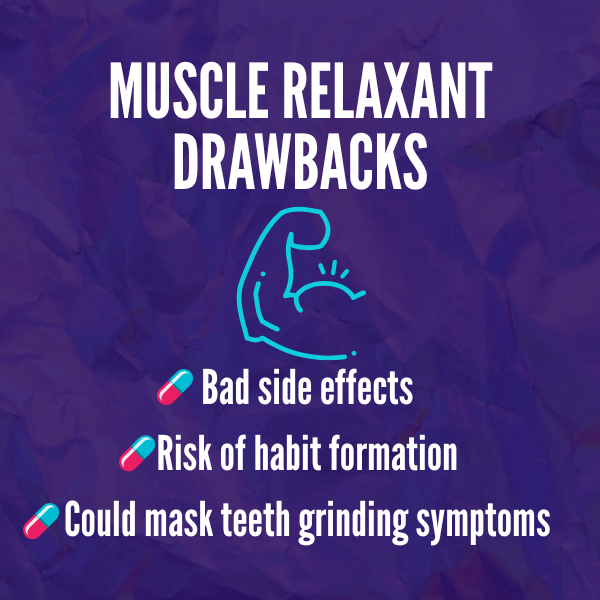
Zerene vs. Muscle Relaxants:
Zerene offers a completely drug-free bruxism solution, which is a major advantage for many patients. Instead of taking a pill to essentially “knock out” your jaw muscles each night, Zerene uses biofeedback to teach you to control your jaw. There are no systemic side effects – you simply wear the device in your mouth during sleep and let it nudge you when you clench. Over a couple of weeks, your brain learns to keep the jaw relaxed on its own. This means you’re not relying on nightly medication, which aligns with the fact that we generally want to minimize long-term drug use for what is largely a behavioral and neuromuscular issue.
Muscle relaxants might still have a limited role. Consider a patient with extreme jaw pain and tightness who is starting Zerene: the first few nights of using Zerene’s device might be slightly disruptive as the patient adapts to the biofeedback cues. A short course of a muscle relaxant or even a pain reliever could help ease them through this initial period. But unlike staying on meds indefinitely, the plan with Zerene is to discontinue any medication once the training kicks in. Another scenario is the patient who only grinds during high-stress periods (for example, a tough month at work). They could potentially use a muscle relaxant just on those rare nights – or simply re-use Zerene for a few “touch-up” nights to get through the stress spike. Given that Zerene can be kept on hand and used during periods of life stress to prevent bruxism flare-ups (LINK), many will find they don’t need to resort to medications at all.
In short, while muscle relaxants blunt the muscular activity temporarily, Zerene aims to eliminate the problematic activity by training your physiology. The latter is a more sustainable and empowering approach for patients, with fewer medical risks.
Physical Therapy and Behavioral Therapies: Addressing the Muscles and Mind
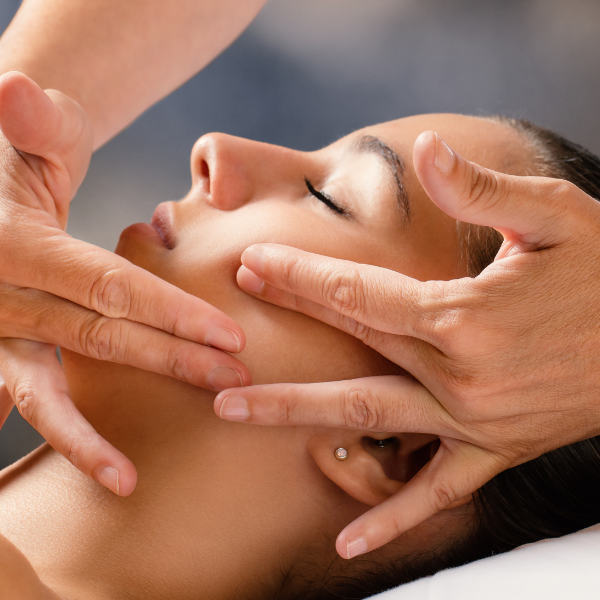
Physical therapy (PT), oral exercises, and other behavioral interventions are additional treatment avenues for bruxism and its related temporomandibular joint (TMJ) issues. Dentists and orthodontists sometimes refer bruxism patients to physical therapists or specialists who can work on the musculoskeletal components of the problem. This can include: jaw stretching and strengthening exercises, massage and trigger point therapy for the jaw and neck muscles, posture correction (since forward head posture can affect jaw tension), and relaxation techniques.
The goal of PT and massage for bruxism is mainly to relieve muscle pain and improve jaw function. For example, therapists might teach a patient self-massage of the masseter and temporalis, or do intra-oral myofascial release to reduce muscle knots. They often also instruct on jaw relaxation exercises and awareness techniques so that during the day the patient can correct any clenching habit (like keeping the tongue on the roof of the mouth, lips closed, teeth apart – a common resting position exercise). There is evidence that these approaches can improve symptoms: a systematic review found some (albeit low-quality) evidence that various physical therapy modalities improved jaw muscle pain, range of motion, and even anxiety levels in bruxism patients (LINK). In other words, working on the muscle and joint health can help manage the consequences of bruxism.
Behavioral therapy in the context of bruxism often overlaps with PT and biofeedback. It includes any method that increases awareness and consciously attempts to modify the habit. For awake bruxism (daytime clenching), habit-reversal techniques and cognitive-behavioral therapy (CBT) strategies can be quite effective – for instance, setting a timer to check jaw position every 20 minutes, or practicing relaxation when feeling stress triggers. These interventions target the psychological factors (stress, anxiety, concentration habits) that contribute to bruxism.
One classic behavioral method for night bruxism is biofeedback training, which is precisely what Zerene utilizes (more on that next). In fact, biofeedback devices have existed in forms like headbands or electrode-based sensors that emit a sound or vibration when they detect muscle activity. Such devices essentially do what a therapist would want – they make the patient aware of the behavior at the moment it happens, thereby allowing them to stop or prevent it. Studies on biofeedback for bruxism have shown promising results. For example, a pilot trial using a wearable vibratory biofeedback splint demonstrated a dramatic decline in clenching episodes and duration over 6–12 weeks, whereas a standard nightguard alone showed no significant change (LINK). Another study noted that even within a few days, biofeedback can reduce excessive jaw muscle activity for awake bruxers (LINK). This illustrates how powerful breaking the habit loop can be when feedback is applied.
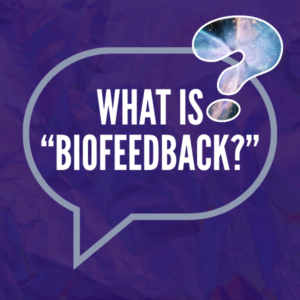 Biofeedback makes the patient aware of the behavior at the moment it happens, thereby allowing them to stop or prevent it.
Biofeedback makes the patient aware of the behavior at the moment it happens, thereby allowing them to stop or prevent it.
Physical therapy and stress management techniques are excellent adjuncts in bruxism care. They may not directly stop sleep grinding in all cases, but they set the stage for healing and prevention. For instance, if a patient’s bruxism is partly driven by high stress and anxiety, incorporating stress reduction (meditation, counseling, better sleep hygiene) will enhance any direct bruxism-focused treatment. Similarly, if months or years of grinding have caused TMJ disorder or muscle spasm, PT can alleviate those issues and improve comfort as we address the bruxism itself.
Zerene vs. Traditional Physical/Behavioral Therapy:
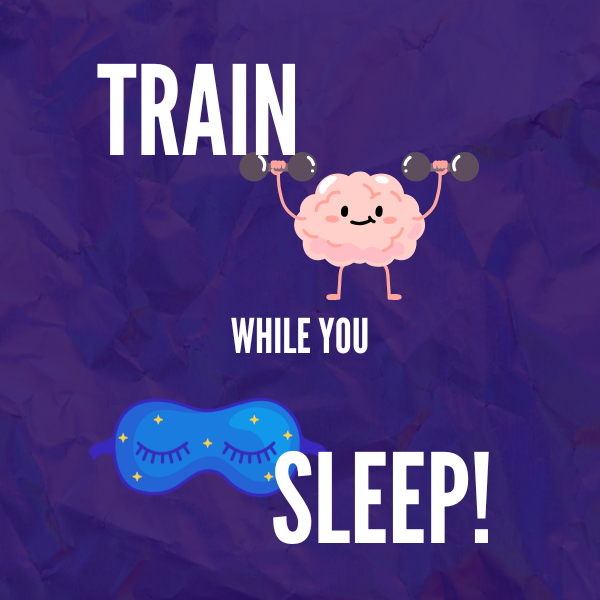
In many ways Zerene can be seen as a specialized form of behavioral therapy – specifically, automated biofeedback during sleep. What makes Zerene stand out is that it does the monitoring and feedback for you, in real-time, which is something a home exercise program cannot. Instead of relying solely on the patient’s conscious efforts (which are impossible during sleep), Zerene delivers a gentle intervention each time the unwanted behavior occurs, conditioning the body to stop. It’s like having a coach watching your jaw 100% of the time and tapping you on the shoulder when you clench – highly effective! This doesn’t mean there’s no role for human coaching or exercises; in fact, the Zerene system pairs each user with a coach who reviews the data and helps tailor the program (LINK). Users also get a data readout (a “Z-Score”) that quantifies their grinding intensity, which can be motivating and informative.
For daytime bruxism or jaw tension, using Zerene at night won’t address that directly (since it functions during sleep). In those cases, combining it with daytime awareness techniques or physical therapy is wise. Dentists, orthodontists, and physiotherapists can work hand-in-hand with Zerene’s team: for example, an orthodontist might ensure a patient’s bite is properly aligned (since a malocclusion or bad bite can sometimes exacerbate bruxism by causing uneven tooth stress (LINK)), a physiotherapist can loosen tight jaw muscles, and Zerene can then retrain the nighttime neuromuscular activity.
To summarize, physical and behavioral therapies contribute to an overall holistic management of bruxism – focusing on muscle health, jaw mechanics, and psychological triggers. Zerene’s biofeedback device fits neatly into this paradigm as a high-tech behavioral therapy tool that works during sleep. It doesn’t conflict with other therapies; rather, it **augments them by directly targeting the nocturnal grinding behavior** in a way nothing else can.
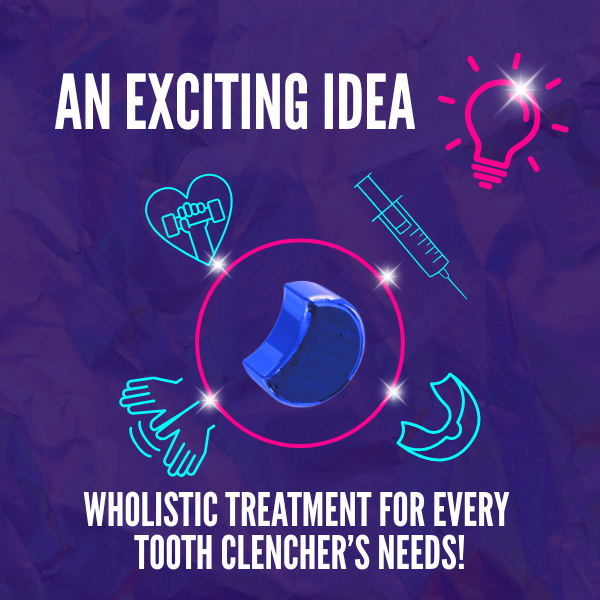
Zerene Biofeedback: Training Away Bruxism in Weeks and Maintaining for Life
Zerene’s biofeedback device represents a new, technology-driven approach to bruxism that aims for a true solution rather than a band-aid. Let’s recap how Zerene works: after getting a custom-fitted mouthguard-like device from Zerene, you wear it for a few nights in “study mode” to establish baseline data on your grinding/clenching patterns (LINK). Then, the device goes into Training Mode. During training, whenever it detects that you are clenching or grinding, it emits a gentle vibrational pulse inside your mouth (LINK). This stimulus is just enough to make your brain register “hey, my jaw is tightening” without fully waking you up in most cases. As soon as you stop clenching, the vibration stops (LINK). Over the course of about 2 weeks of nightly use, this consistent feedback loop trains your subconscious to keep the jaw relaxed. Essentially, you learn to interrupt bruxism events automatically. Users typically see a sharp reduction in the frequency and intensity of grinding nights within this period – many reach near-normal levels of activity. It’s a form of conditioned reflex: the jaw muscle gets conditioned to not sustain a contraction because it’s been repeatedly prompted to relax (LINK).
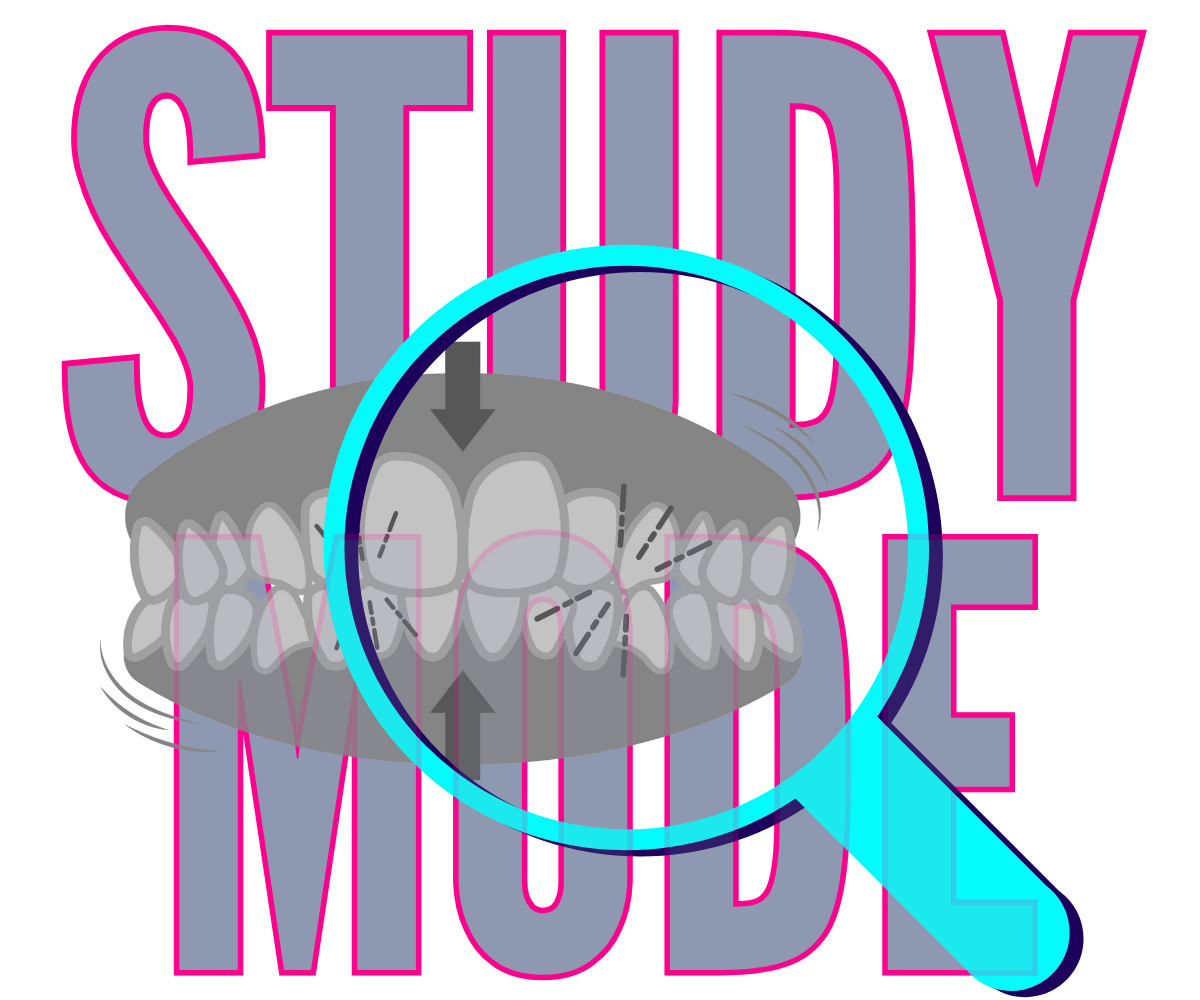
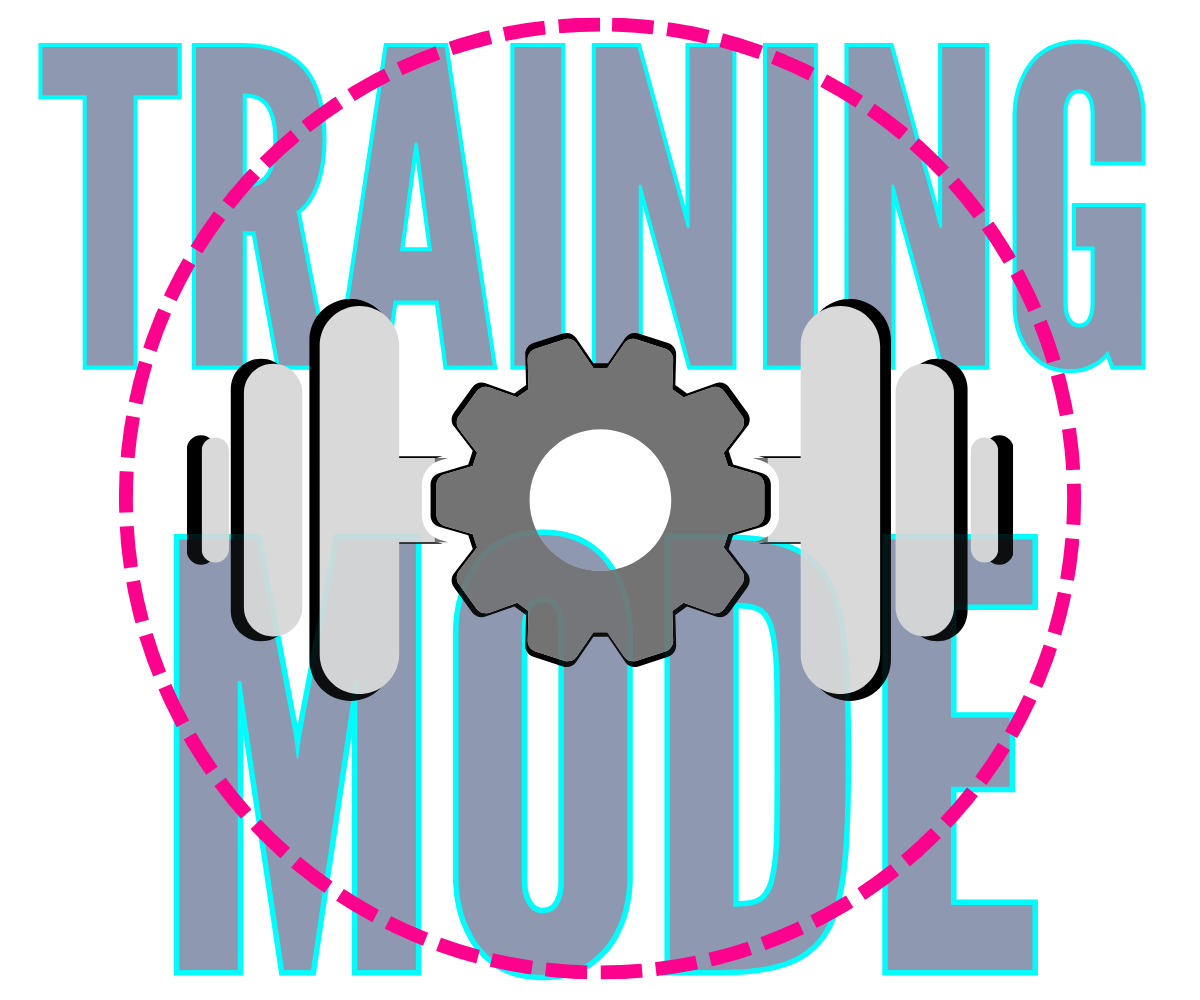
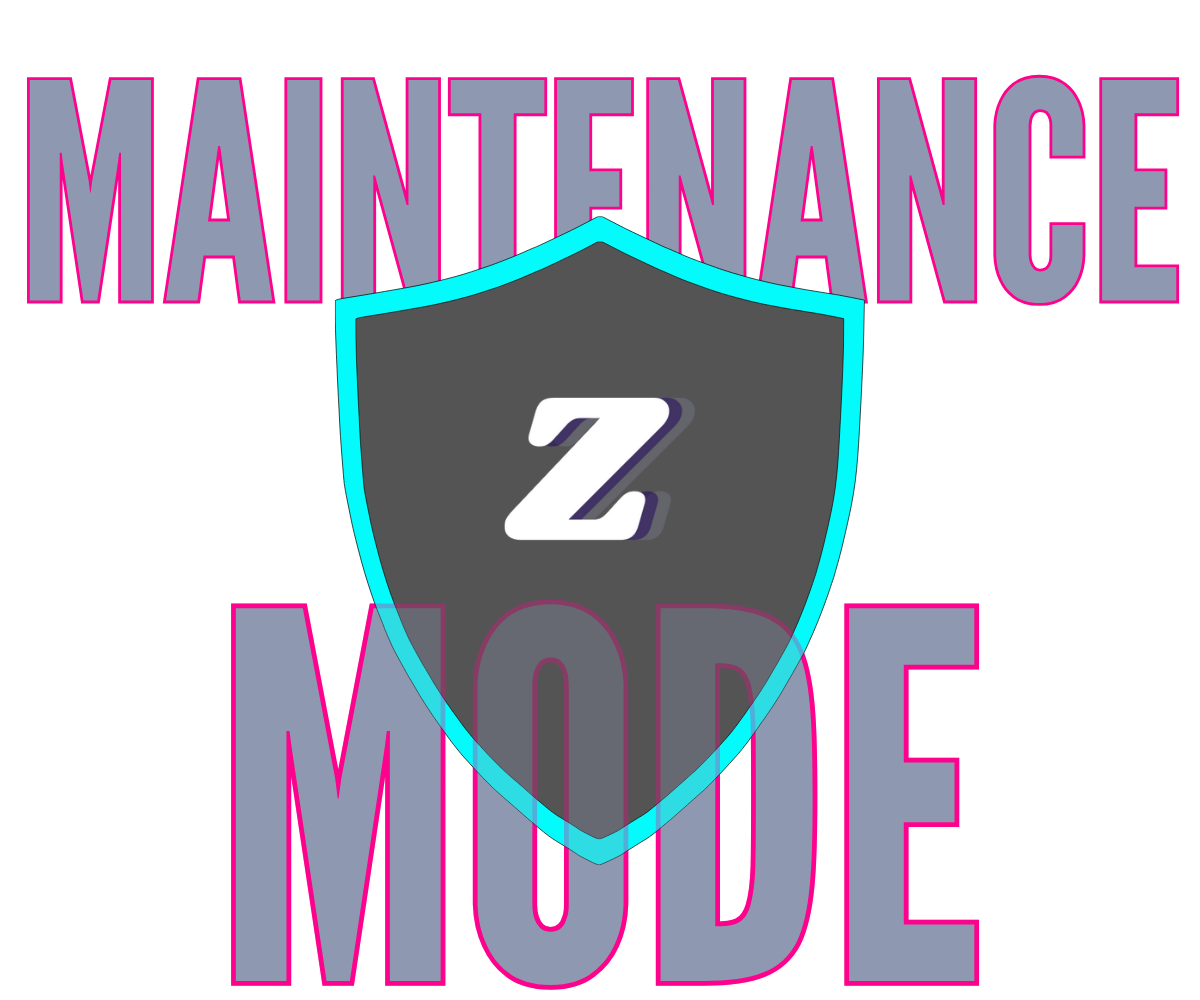
One of Zerene’s biggest advantages is the long-term benefit after the initial training. Once you’ve achieved a significant reduction in bruxism, you enter “Maintenance Mode.” In maintenance, you do not need to wear the device every night – only occasionally to reinforce the habit as needed (LINK). For some people that might mean one night every few weeks, for others maybe one week out of a month, depending on stress levels and personal tendency (LINK). If you go through a particularly stressful period and notice old symptoms creeping back (sore jaw, morning headaches), you can always pop the Zerene device back in for a few nights of re-training (a “touch-up”) (LINK). This flexible, on-demand use is a completely different experience than being tied to a nightly mouthguard or continuous medication. It empowers patients to manage their condition proactively.
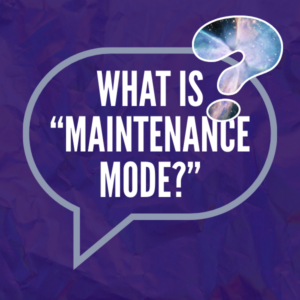 After you train yourself to relax your jaws, “Maintenance Mode” allows you to monitor your teeth clenching from time to time, and retrain yourself as needed. This allows you to have peace of mind that you aren’t doing damage to your teeth and jaws so you can enjoy the benefits of your Zerene training.
After you train yourself to relax your jaws, “Maintenance Mode” allows you to monitor your teeth clenching from time to time, and retrain yourself as needed. This allows you to have peace of mind that you aren’t doing damage to your teeth and jaws so you can enjoy the benefits of your Zerene training.
From a clinical standpoint, when is Zerene particularly indicated? Here are some scenarios where Zerene shines:
– When a patient wants to stop the bruxism, not just mitigate it: Many patients, like Zerene’s own founder, are not satisfied with “wear a guard forever” as the only option (LINK). Zerene is ideal for those motivated to eliminate the root cause. It’s the only solution among those we’ve discussed that aims to truly extinguish the nocturnal grinding behavior.
– Patients who cannot tolerate traditional options: If someone can’t sleep with a bulky nightguard or experiences side effects from medications, Zerene offers a different modality. The Zerene mouthpiece is custom-fit and low-profile. And aside from the mild vibration (which is calibrated to be tolerable and can be adjusted), it doesn’t introduce foreign substances or significant discomfort.
– Cases of mild to severe sleep bruxism: Research suggests biofeedback works especially well for mild bruxers (LINK) – often these are people who have detectable grinding but not to an extreme degree of jaw force. Zerene can potentially nip the habit in the bud for these patients, preventing progression and avoiding the need for more aggressive measures later. Many severe bruxers have also succeeded with Zerene; they might just need a bit longer in nightly training use or use multimodal support.
– Refractory bruxism or combination therapy: If a patient has tried a nightguard and still chips teeth, or tried Botox and it wore off, Zerene is indicated to provide that missing piece – learning and behavior change. It can be combined with any of the other therapies for a comprehensive approach. For example, a dentist could recommend Zerene alongside continued nightguard use initially, with the plan to discontinue the guard once the bruxism significantly decreases. Or a sleep specialist might add Zerene for a patient on CPAP for sleep apnea who still grinds at night.
– Periodic stress or situational bruxism: Some people only grind their teeth during specific stressful life events or when their routine is disrupted. These patients can keep a Zerene device in their toolkit and deploy it during those times. It’s a far better strategy than preemptively taking anxiolytic drugs or waiting until after the stress when damage has been done. Essentially, Zerene can act as a “preventive tune-up” whenever needed.
– Patients with comorbid TMJ disorders or orthodontic concerns: Using Zerene to reduce clenching can protect dental work (like veneers, crowns, or orthodontic retainers) from damage. Orthodontists appreciate that if a patient stops clenching, their post-treatment teeth alignment is less likely to be compromised due to constant heavy forces. TMJ specialists find that if bruxism is controlled, inflammation and strain on the jaw joints diminishes.
Now, it’s worth noting that Zerene is a relatively new therapy. Dentists and clinicians will rightly ask about the evidence base. While large-scale clinical trials are still forthcoming, early data and pilot studies on similar biofeedback approaches support Zerene’s efficacy. The concept of contingent vibratory feedback for bruxism has been around for decades, but Zerene packages it in a modern, user-friendly way with data tracking. And anecdotally, the company reports that most users achieve significant improvement after about 14 nights of use, which aligns with what we expect from habit formation science. As with any treatment, patient engagement matters: someone who uses Zerene consistently as directed will get the best results.
Integrating Zerene Into Bruxism Treatment Plans
In the overall therapeutic landscape for bruxism, where does Zerene fit? The comparisons above illustrate that Zerene can stand on its own or work alongside other treatments:
– As a first-line standalone treatment: For many adult bruxism patients, especially those averse to lifelong nightguard use or medication, Zerene may be the best first-line option. It directly targets the cause (the neural habit) and has a high chance of significantly reducing the behavior in a short time. If successful, it obviates the need for more invasive or indefinite therapies. From a clinician’s perspective, suggesting Zerene early could save the patient from years of tooth damage and interventions.
– Adjunct to protect and relieve in severe cases: In very severe bruxism, a multi-pronged approach is prudent. For example, a dentist might combine a protective appliance (nightguard or temporary overlay on teeth) + Zerene + possibly Botox for a cycle, then gradually remove elements as the situation improves. Zerene in this context accelerates the weaning off of other modalities – it’s the *exit strategy* to eventually just have the patient be free of both bruxism and external aids.
– Part of a holistic plan: Bruxism often doesn’t exist in isolation. It can be part of a web of issues including sleep apnea, anxiety, GERD, etc. A sleep specialist might focus on treating the sleep apnea (which often reduces bruxism by itself), while also enlisting Zerene to handle any remaining grinding. A therapist might work on the patient’s anxiety in the daytime, while Zerene handles the nighttime. Because Zerene provides data (number of clenching events, intensity, etc.), it can actually help practitioners monitor progress objectively and tailor other therapies accordingly (LINK).
From a clinical considerations standpoint, Zerene is particularly indicated when the priority is to stop the damage and break the habit quickly, and when the patient is willing to engage with a device nightly for a short period. It might be less indicated in a scenario like a very young child with bruxism (where behavior therapies are harder, and many kids outgrow it anyway), or in someone with certain medical contraindications to wearing an oral appliance (for instance, uncontrolled epilepsy or severe sleep apnea might need to be managed first). But for the vast majority of bruxism sufferers – which includes a large portion of the adult population, often undiagnosed – Zerene offers a promising solution that addresses what others don’t: the brain-muscle connection during sleep.
Key Takeaways
– Nightguards protect the teeth but do not stop grinding (LINK). They require lifelong nightly use, and many patients struggle with them.
– Botox injections temporarily weaken the jaw muscles, reducing bruxism intensity and pain (LINK). They’re effective especially for moderate to severe cases, but need repeat treatments and don’t teach you not to grind.
– Muscle relaxant medications can provide short-term relief but have minimal evidence for long-term benefit (LINK). They carry side effect and dependency risks, and guidelines only suggest them for short periods if at all (LINK).
– Physical therapy and exercises help manage the symptoms (muscle pain, joint issues) and improve jaw function. They can reduce daytime clenching through awareness and improve overall well-being, but may not prevent sleep grinding in isolation (LINK).
– Zerene’s biofeedback device is a standout approach that can significantly curb or even eliminate bruxism behavior. Most users retrain themselves in ~2 weeks, after which they only need occasional use for maintenance. It’s drug-free and works by conditioning the jaw to relax on its own.
– Combination therapy is often the most effective. Zerene plays well with others – you can wear a nightguard initially, get a Botox injection, or do jaw exercises concurrently with using Zerene. In fact, using Zerene may shorten the duration you’d need those other aids.
– Patient selection and timing: Zerene is ideal for adults with sleep bruxism who are motivated for a long-term solution. It’s especially useful when other treatments aren’t tolerated or haven’t actually stopped the grinding. Even for those who are using nightguards or Botox successfully, adding Zerene could help them eventually stop those therapies and maintain results on their own.
In conclusion, bruxism treatment is evolving beyond simply “guarding” against grinding. Biofeedback for bruxism is an evidence-backed method that, through devices like Zerene, is now accessible to dentists, orthodontists, sleep specialists, and patients looking for how to stop grinding teeth rather than just cushion the grind. Zerene serves as both a standalone solution – with the ability to break the bruxism habit – and a complement to existing treatments – enhancing their effectiveness and providing a pathway to independence from nightly guards or frequent injections. By fitting Zerene into the therapeutic landscape, dental and healthcare professionals can offer a more comprehensive, long-lasting management plan for bruxism, leading to healthier teeth, happier jaws, and better sleep for their patients.
Sources:
1. Lobbezoo F, et al. Occlusal splints for treating sleep bruxism (tooth grinding). Cochrane Database Syst Rev. 2008. https://pmc.ncbi.nlm.nih.gov/articles/PMC8890597/
2. Hu W, et al. Efficacy of biofeedback therapy via a mini wireless device on sleep bruxism contrasted with occlusal splint: a pilot study. J Biomed Res. 2015. https://pmc.ncbi.nlm.nih.gov/articles/PMC4389117/
3. Fernández-Núñez T, et al. Efficacy of botulinum toxin in the treatment of bruxism: Systematic review. Med Oral Patol Oral Cir Bucal. 2019. https://pubmed.ncbi.nlm.nih.gov/31246937/
4. Mayo Clinic – Bruxism: Diagnosis & Treatment. 2023. https://www.mayoclinic.org/diseases-conditions/bruxism/diagnosis-treatment/drc-20356100
5. Alencar F, et al. Cyclobenzaprine in addition to self-care for jaw pain upon awakening: RCT. J Oral Facial Pain Headache. 2014. https://pubmed.ncbi.nlm.nih.gov/24822235
6. Amorim CS, et al. Effect of Physical Therapy in Bruxism Treatment: A Systematic Review. J Man Manip Ther. 2018. https://pubmed.ncbi.nlm.nih.gov/30041736/
7. Zerene – How Zerene Works (Study, Training, Maintenance Modes). 2025. https://zerenelife.com/how-it-works/
8. JS Dental Lab – 6 Alternatives to Muscle Relaxants for Bruxism. 2024. https://jsdentallab.com/blogs/news/bruxism-muscle-relaxant-alternatives

